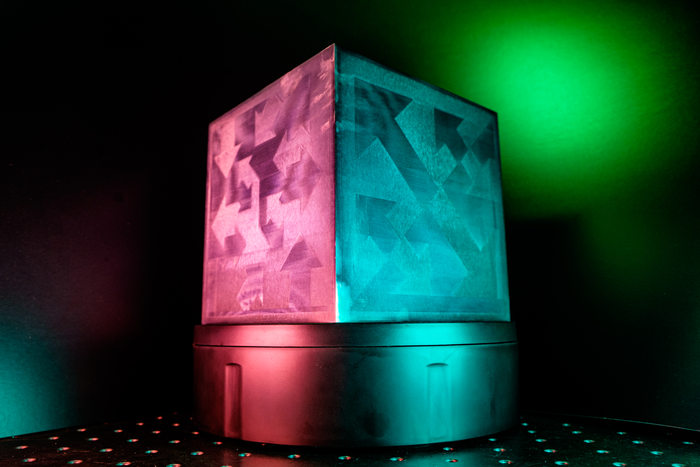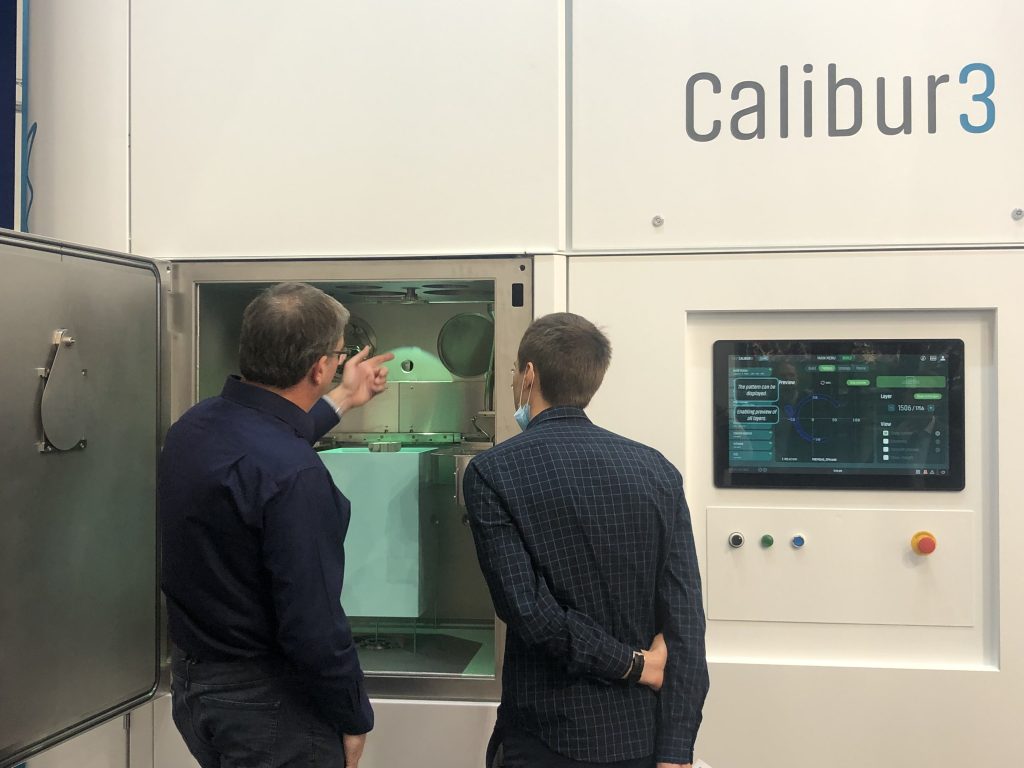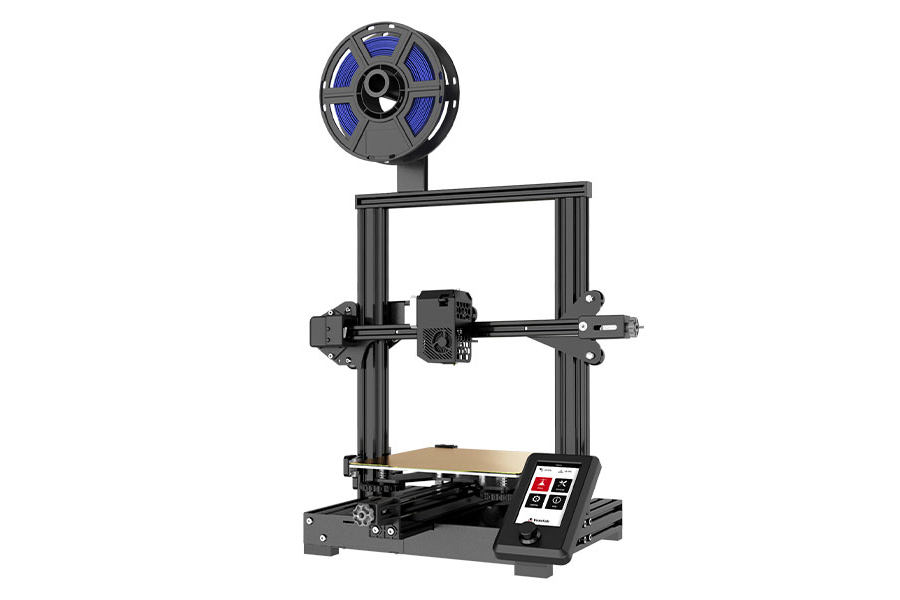In this edition of Sliced, the 3D Printing Industry news digest, we cover the latest business developments and partnerships in the 3D printing sector.
Today’s edition includes 3D printing partnerships, a new consumer-grade 3D printer, a novel 3D printed sink, a space-bound art gallery featuring 3D printed art, and more.
Read on for the most recent updates from HTL Co Japan, Intercast Australia, ENABLE 3D, EVO 3D, Kohler, Nanyang Technological University, and more.

New partnerships in additive manufacturing
Kicking off with the latest business deals in additive manufacturing, Wayland Additive, a UK-based manufacturer of electron beam melting 3D printers, has signed a new distribution agreement with HTL Co Japan. As part of the partnership, HTL will sell Wayland Additive’s Calibur3 system in Japan, South Korea, and Taiwan, expanding the NeuBeam technology’s reach to the Eastern Asia markets.
Will Richardson, CEO at Wayland Additive, said, “It is a great pleasure to make this announcement today and to welcome HTL Co Japan as a strategic partner for Wayland Additive. HTL Co Japan’s reputation speaks for itself and we are delighted to be working with their team to further promote and demonstrate the key benefits of the NeuBeam process as featured in the Calibur3 system.”
Elsewhere, 3D printing service provider 3D Metalforge has signed a new 18 month Channel Partner Agreement with Fabriquent Pty Ltd (trading as Intercast Australia), a foundry producing metal components for the mining sector. As part of the non-exclusive deal, Intercast has been appointed as an authorized channel partner, allowing the firm to promote 3D Metalforge’s products and services to customers in Australia.
Matthew Waterhouse, Managing Director of 3D Metalforge, adds, “Australia is a key market in our strategic expansion, and we are extremely pleased to collaborate with leading foundry Intercast as a channel partner and grow our full service additive manufacturing model in the country. Intercast has over 30 years’ experience with a strong sales network and market penetration, and together we are well positioned to offer customers a point of difference.”
ENABLE 3D, a developer of storage and accessory products for tool brands, has become the latest member of the Aachen Center for Additive Manufacturing (ACAM). The company will now have access to ACAM’s entire 3D printing community with increased visibility and project opportunities. ENABLE 3D also plans to take part in the development of white papers and joint research projects.
Gerret Lukas, Director of Projects at ACAM, stated, “We are excited to be joining forces with Enable 3D. The company shows a truly unique way how additive manufacturing supports a brand strategy. Their approach to AM will spark new ideas in our community. Enable 3D’s place within our community will help broaden their possibilities with AM and create new exciting innovations. We are looking forward to walking their path of AM with them.”
In the UK, 3D printing service provider J-Supplied 3D has changed its name to EVO 3D and joined Evolution Sales and Marketing. Having received a capital investment of £250,000, the company has also announced an expansion with new locations in both Exeter and Huddersfield, launching in January.
Martin Jewell, who founded J-Supplied 3D in 2018, adds, “The evolution of J-Supplied 3D into EVO 3D means we can focus on innovative additive manufacturing projects like our partnership with Plymouth University and OREC, as well as expanding further into high-value industries like aerospace and automotive.”

Optomec forms new 3D Printed Electronics Technical Advisory Board
Optomec, a manufacturer of industrial-grade 3D printing systems, has formed a new 3D Printed Electronics Technical Advisory Board. The board consists of several leading experts in the field of printed electronics, including a Fortune 500 medical device OEM, a global contract manufacturing services provider, two DOD electronics contractors, and two printed electronics university research labs.
The ultimate aim of the Technical Advisory Board is to accelerate the adoption of printed electronics, with discussions concerning industry trends, key challenges, market opportunities, product requirements, and economic justifications.
“Optomec is excited to announce the formation of its Printed Electronics Technical Advisory Board, and appreciates the participation of such an accomplished set of experts,” said David Ramahi, Optomec’s CEO. “The cross-industry group dynamic elevates our discussions in a way that will help maintain Optomec’s leadership position, but also inure to the benefit of the Printed Electronics industry more broadly.”
Meltio wins Internationalization of Andalusian Companies award for foreign trade
Metal 3D printing technology developer Meltio has won the 15th Premios Alas for the Internationalization of Andalusian Companies award in the category ‘Initiation to Export’.
The award is presented every year by the Regional Government of Andalucía, and is intended to recognize Andalusian companies that have excelled when it comes to foreign trade. The ‘Initiation to Export’ category, specifically, acknowledges young enterprises that have started their activity abroad in the last three years.
FlashForge launches new Voxelab Aquila S2 3D printer
FlashForge, via its consumer-focused Voxelab brand, has launched its new Aquila S2 3D printer.
The accessibility-centric desktop FFF system is priced at under $300 and features a build volume measuring 220 x 220 x 240mm. Additionally, the Aquila S2 comes complete with a direct driver extruder, a maximum nozzle temperature of 300℃, and new N32 chips. Customers will be able to use the system to 3D print PLA, ABS, PETG, PLA-CF, PETG-CF, PA12-CF, PA, PC, and TPU.
“Although the most commonly used filaments are PLA and ABS, an increasing number of users expect to have an affordable 3D printer that is capable of printing other filaments such as flexible materials,” said Mr. Guo, the R&D Manager of the Aquila team. “By making improvements to the extruder, thermistor, firmware, and other aspects, we managed to achieve great results.”

Nano Dimension sells its first two DragonFly IV 3D printers
Nano Dimension, a leading provider of electronics 3D printing technology, has sold its first two DragonFly IV 3D printers to defense and government agencies.
The new DragonFly IV system is designed to simplify the production of High-Performance Electronic Devices (Hi-PEDs), with greater conductive predictability, higher throughput potential, and more precise levels of detail. The machine can be used to print with integrated in-situ capacitors, antennas, coils, transformers, and other electromechanical components.
3D printing in the art world
In the art world, the Moon Gallery Foundation is currently developing an art gallery to be sent to the Moon, and it’s set to feature 3D printed art pieces.
The international initiative will see 100 artworks from artists around the world fly to the Moon by 2025, and a piece called the ‘Structure and Reflectance’ cube has already been selected as one of the early entries. Designed by Singaporean architect Lakshmi Mohanbabu, the cube has been prototyped and 3D printed several times with help from researchers at Nanyang Technological University.
The latest version of the cube features crystals ingrained in a metal structure, with varying levels of surface roughness that relect light in different directions.
Dr Matteo Seita, an Assistant Professor at NTU Singapore, explains, “Additive Manufacturing is suitable for enabling this level of control over the crystal structure of solids. More specifically, the work was created using ‘laser powder bed fusion technology’ a metal additive manufacturing process which allows us to control the surface roughness through varying the laser parameter.”
Finally, plumbing product manufacturer Kohler has collaborated with artist Daniel Arsham to create Rock.01, a limited edition 3D printed bathroom sink basin design. Only 99 units of the unconventional vessel sink will be 3D printed, and each sink will come with its own certificate verifying its authenticity and edition number. Resembling stacked rocks, Rock.01 will be 3D printed using vitreous china with traditional brass accents.

Subscribe to the 3D Printing Industry newsletter for the latest news in additive manufacturing. You can also stay connected by following us on Twitter, liking us on Facebook, and tuning into the 3D Printing Industry YouTube Channel.
Looking for a career in additive manufacturing? Visit 3D Printing Jobs for a selection of roles in the industry.
Featured image shows the Sliced logo on an image of the Structure and Reflectance cube. Photo via NTU.



